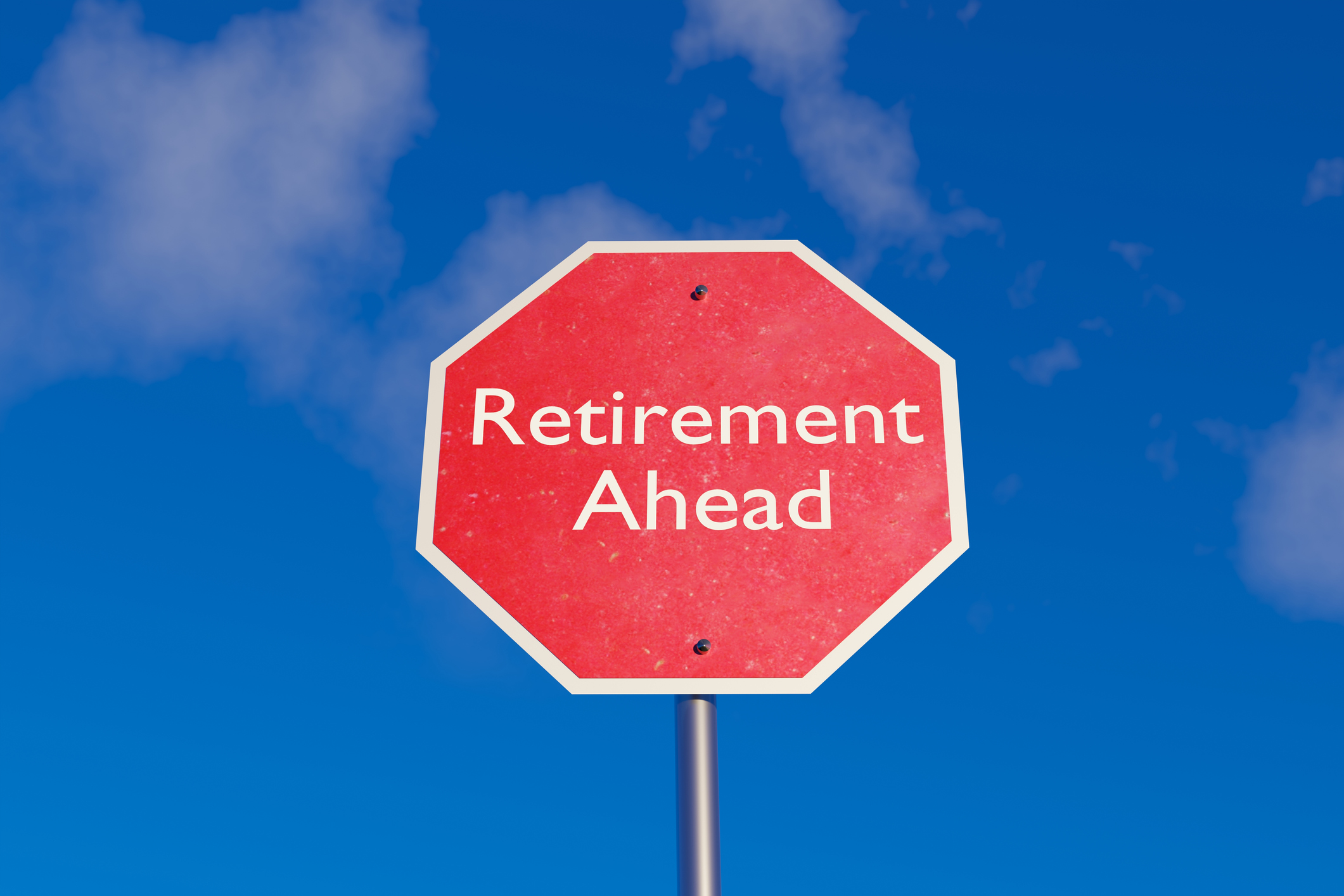Phased Retirement: Why Easing Into Retirement Might Be Your Best Move
If retiring cold turkey isn’t for you, consider a phased retirement that lets you scale back at work and ease into retirement before eventually stepping away completely.


Four million Americans turned 65 in 2024, more than in any year previously. Another four million will turn 65 in 2025. The number of workers 65 and older has grown to 11 million, according to the Pew Research Center, nearly quadruple the number in the mid-1980s. Many of these people are choosing to keep working and slowly ease into retirement over time.
Gradually reducing hours or working a more flexible schedule is the most desired way to retire and is preferred by Generation X (67%) and millennials (56%), according to the Principal Financial Well-Being Index. Baby Boomers and Generation Z are similar in their approach to retirement, with nearly half preferring to move immediately from working full-time to not working at all.
Not true for Anthony Damaschino, author of The Empty Nest Blueprint Books and a recovering HR executive. He phased into retirement in 2020 but realized at just 52 that he might die of boredom if he didn't do something to put his skills and talents to work and contribute in some way.

Sign up for Kiplinger’s Free E-Newsletters
Profit and prosper with the best of expert advice on investing, taxes, retirement, personal finance and more - straight to your e-mail.
Profit and prosper with the best of expert advice - straight to your e-mail.
“People race for a financial goal and then think they can just stop when they hit it," he said. "Not true. If you just stop, then your whole life stops.”
For Anthony, retiring from a full-time position was not an option. Instead, he pivoted his free time into writing two books and co-hosting a podcast.
“I’m not checking emails at 9:00 pm every day or traveling the world, there are no performance reviews, and I don't miss working for a large company," he said. "I do, however, need some social and creative outlets, and it's nice to make a little money, but most importantly, I’m keeping my mind active by phasing into full-time retirement.”
While phased retirement may not be for everyone, it is becoming an increasingly popular option before eventually stepping away completely. Is easing into retirement your best move? Let’s find out.
What is a phased retirement?
Phased retirement allows employees nearing the end of their careers to gradually reduce their work hours or responsibilities over time rather than abruptly transition into full-time retirement. Phased retirement can offer a smoother transition for both employer and employee, allowing workers to stay employed, typically on a part-time or flexible schedule, while adapting to their new lifestyle. It's a flexible option that is especially appealing to older workers who are not ready to retire fully but wish to reduce their workload or step into a more versatile role.
How phased retirement works for one company may be different for another. Some common arrangements may include:
- Reduced hours: Employees work fewer weekly hours, gradually decreasing their hours over time.
- Job sharing: Employees share one full-time position, splitting responsibilities.
- Changing roles: Employees transition to less demanding or different roles within an organization.
- Mentorship or consulting: Employees may work as consultants or mentors to other staff, offering expertise without the demands of a regular work schedule.
Managing finances in a phased retirement
An essential aspect of planning for phased retirement is managing your finances. When transitioning from full-time work to a more flexible schedule, it becomes imperative that you have a plan that aligns with your new lifestyle. Imagine phasing into retirement only to discover your new income levels won’t support that lifestyle.
The first step is to assess all sources of income — pension, retirement plan, Social Security benefits, investment earnings, and other income streams — to determine your monthly and annual income.
Then, identify expenses, like your mortgage payment, healthcare costs, groceries and utilities. Look at discretionary expenses like travel and entertainment and pinpoint areas where you can make adjustments if necessary. You will also want to account for unexpected expenses or emergencies that may come up.
Setting aside a portion of your income in an emergency fund becomes crucial to your phased retirement plan.
Second, prioritize your financial goals and allocate a portion of your income towards each one. You may want to become debt-free. If that’s a goal, allocate some of your income to debt repayments.
Mindy Yu, CIMA, Director of Investing at Betterment at Work, explains that many people choose a phased retirement because of the financial stability and flexibility it provides.
“It allows you to maintain an income and access to valuable benefits, such as health insurance, an HSA or FSA account, and employer-sponsored 401(k) matches before becoming eligible for Medicare,” she said.
Yu adds that phased retirement can also preserve savings longer, giving retirees’ 401(k) investments more time to grow through compounding, and potentially delaying Social Security claims, which can increase future wealth. “Besides the benefits to employees, phased retirement also benefits employers by enabling them to retain valuable talent and facilitate knowledge transfer to junior, less experienced workers.”
Advantages of phased retirement
A phased retirement strategy offers several benefits for both employees and employers.
For employees
One of the most appealing aspects of phased retirement is that it allows the employee to work towards their retirement over time rather than just stopping abruptly and being left with finding ways to fill their newly found forty hours per week, says Lawrence Sprung, CFP, founder and lead wealth advisor at Mitlin Financial.
A gradual transition to full-time retirement: Phased retirement can make the transition from a full-time job to retirement smoother financially and emotionally.
Prolonged income and benefits: By continuing to work, you can maintain a source of income longer, which can help bridge the gap until you start receiving Social Security benefits or a pension. Plus, depending on your employer, you may be able to retain some health plan benefits.
Reduced workload: The idea of a phased retirement may appeal to you because you can gradually reduce your workload or work a flexible schedule, giving you time to pursue other personal pursuits.
Maintain a sense of purpose: It can be difficult for some people to maintain a sense of purpose after contributing to a company for years. Phased retirement can help you stay both mentally and physically engaged until you’re ready for full-time retirement.
Time to plan your retirement: Working during the phased retirement period can give you more time to make final adjustments to your retirement savings and investments so you can prepare for the time when your paycheck stops.
Impact on health: According to a study by Harvard Medical School, roughly one-third of retirees experience some form of depression in the first two years post-retirement. Reducing work hours gradually may give you a purpose in life and add to your overall physical and mental well-being.
For employers
Results of the March 2024 "Workplace Transformations: Employer Business Practices and Benefit Offerings" survey by the Transamerica Institute show that only 35% of employers have a formal phased retirement program, but 28% say they plan to implement one in the future.
Employee Retention: A company-wide phased retirement plan can help employers retain top talent and possess valuable experience and knowledge. Sprung points out, “Phased retirement allows the employer to reap the benefits of their workers’ knowledge and expertise for longer and have them help train and mentor the next generation. This creates a win-win situation.”
Increased employee satisfaction: Besides other employee benefits, employers that offer flexible retirement options, like phased retirement, often increase employee satisfaction and company loyalty overall. Damaschino states further that phased retirement isn’t about working fewer hours. It's about working with a greater degree of personal freedom than you had in 'the daily grind.'
Reduced risk of age discrimination claims: The Age Discrimination in Employment Act (ADEA) forbids age discrimination against people 40 or older, but that doesn’t mean it never happens. By providing a phased retirement option, companies can avoid potential age discrimination claims by offering older employees the chance to retire on their own terms rather than forcing them out.
Disadvantages of phased retirement
Phased retirement offers many benefits, but it also has several disadvantages.
For employees
Reduced income: One of the apparent disadvantages of phased retirement is the reduction in income. As work hours decrease, so does salary. David Lester, founder at DCL Capital, advises that if you plan from the beginning of your career, you can immediately build assets that produce income. “Take advantage of 401ks and contribution matching, but also build a dividend portfolio outside your retirement accounts. Once your portfolio produces enough income from dividends, you can use it to help phase our work as well.”
Impact on benefits: Some healthcare benefits, pension contributions, paid time-off and retirement plans are tied to full-time work. So, reducing your hours may lead to a reduction or loss of benefits.
Decreased morale: You may feel disconnected from the workplace when you work fewer hours or perform tasks outside your previous obligations. This can lead to a decrease in morale and job satisfaction. Also, your coworkers may resent you if they are required to pick up the slack when you gradually transition out.
For employers
Redistributing responsibilities: Phased retirement can complicate the work environment. Employers may face challenges in redistributing responsibilities or restructuring work. If an employee hasn’t clearly defined the timeline for full-time retirement, they may also face difficulties in managing the transition.
The potential for negative perceptions: Phasing into full-time retirement can result in negative perceptions from coworkers and management. Employers may feel you are less engaged and committed to the company, and peers may feel you are not contributing at the same level as when you were employed full-time.
Administrative burden: The logistics of implementing phased retirement programs can be complicated for organizations and may require adjusting payroll, creating new policies, readjusting benefits and ensuring compliance with legal regulations — all of which is time-consuming.
Why more companies are offering phased retirements
Generally, people are living longer than ever before. This has promoted a rethinking of how much time a person spends in the workplace, with some workers still punching the time clock well beyond traditional retirement age. In response, employers are beginning to recognize that phased retirement is a mutually beneficial strategy for both employees and companies.
For employers, it’s a way to retain valuable talent, ensure a smooth transfer of skills and knowledge to other employees and manage a multi-generational work environment. For employees, it offers a way to transition into retirement gradually while maintaining income and purpose.
In November 2024, the number of workers aged 55 to 64 rose to 66%, a record high going back to 1948. For workers aged 55 to 69, labor force participation rose to 56.3% in November. While not a record high, this was the highest mark since November 2019, according to the Federal Reserve Bank of Richmond.
For the most part, businesses welcome this increase in older workers who still report challenges in hiring skilled workers. In response, more and more companies are offering phased retirement as a way to retain these workers. According to a March 2024 study by the Transamerica Institute called Workplace Transformations: Employer Business Practices and Benefit Offerings, almost nine in 10 employers offer opportunities, work arrangements, training and tools needed for employees of all ages — including those aged 50 and older — to be successful in their current role at the company.
- More than half of employers (52%) say that their company culture emphasizes professional growth and development among employees of all ages.
- Employers are promoting lifelong learning and fostering a multigenerational workforce.
- Among companies with job openings in 2023, more than half of employers (55%) gave “a great deal” (26%) or “quite a bit” (29%) of consideration to age 50+ job applicants.
Bottom line
Phased retirement isn’t for everyone, but the benefits can’t be overlooked. Jake Skelhorn of Spark Wealth Advisors, LLC offers this final observation. "Some people may take the leap to full-time retirement as soon as possible, while others delay retirement until absolutely necessary. Either way, it comes down to each pre-retiree's health, job satisfaction, personality type, and how much money they need to exit the workforce confidently."
Related Content
Get Kiplinger Today newsletter — free
Profit and prosper with the best of Kiplinger's advice on investing, taxes, retirement, personal finance and much more. Delivered daily. Enter your email in the box and click Sign Me Up.

For the past 18+ years, Kathryn has highlighted the humanity in personal finance by shaping stories that identify the opportunities and obstacles in managing a person's finances. All the same, she’ll jump on other equally important topics if needed. Kathryn graduated with a degree in Journalism and lives in Duluth, Minnesota. She joined Kiplinger in 2023 as a contributor.
-
 The AI Doctor Coming to Read Your Test Results
The AI Doctor Coming to Read Your Test ResultsThe Kiplinger Letter There’s big opportunity for AI tools that analyze CAT scans, MRIs and other medical images. But there are also big challenges that human clinicians and tech companies will have to overcome.
By John Miley Published
-
 The Best Places for LGBTQ People to Retire Abroad
The Best Places for LGBTQ People to Retire AbroadLGBTQ people can safely retire abroad, but they must know a country’s laws and level of support — going beyond the usual retirement considerations.
By Drew Limsky Published
-
 Best Places for LGBTQ People to Retire Abroad
Best Places for LGBTQ People to Retire AbroadLGBTQ people can safely retire abroad, but they must know a country’s laws and level of support — going beyond the usual retirement considerations.
By Drew Limsky Published
-
 Financial Planning's Paradox: Balancing Riches and True Wealth
Financial Planning's Paradox: Balancing Riches and True WealthWhile enough money is important for financial security, it does not guarantee fulfillment. How can retirees and financial advisers keep their eye on the ball?
By Richard P. Himmer, PhD Published
-
 A Confident Retirement Starts With These Four Strategies
A Confident Retirement Starts With These Four StrategiesWork your way around income gaps, tax gaffes and Social Security insecurity with some thoughtful planning and analysis.
By Nick Bare, CFP® Published
-
 Six Reasons to Disinherit Someone and How to Do It
Six Reasons to Disinherit Someone and How to Do ItWhether you're navigating a second marriage, dealing with an estranged relative or leaving your assets to charity, there are reasons to disinherit someone. Here's how.
By Donna LeValley Published
-
 Should You Still Wait Until 70 to Claim Social Security?
Should You Still Wait Until 70 to Claim Social Security?Delaying Social Security until age 70 will increase your benefits. But with shortages ahead, and talk of cuts, is there a case for claiming sooner?
By Evan T. Beach, CFP®, AWMA® Published
-
 Retirement Planning for Couples: How to Plan to Be So Happy Together
Retirement Planning for Couples: How to Plan to Be So Happy TogetherPlanning for retirement as a couple is a team sport that takes open communication, thoughtful planning and a solid financial strategy.
By Andrew Rosen, CFP®, CEP Published
-
 Market Turmoil: What History Tells Us About Current Volatility
Market Turmoil: What History Tells Us About Current VolatilityThis up-and-down uncertainty is nerve-racking, but a look back at previous downturns shows that the markets are resilient. Here's how to ride out the turmoil.
By Michael Aloi, CFP® Published
-
 What 401(k) Savers Near Retirement Can Do Amid Market Volatility
What 401(k) Savers Near Retirement Can Do Amid Market VolatilityWhether retirement is years away, a year or two out, or in the rearview mirror, here's how to handle uncertainty in your 401(k).
By Donna Fuscaldo Published